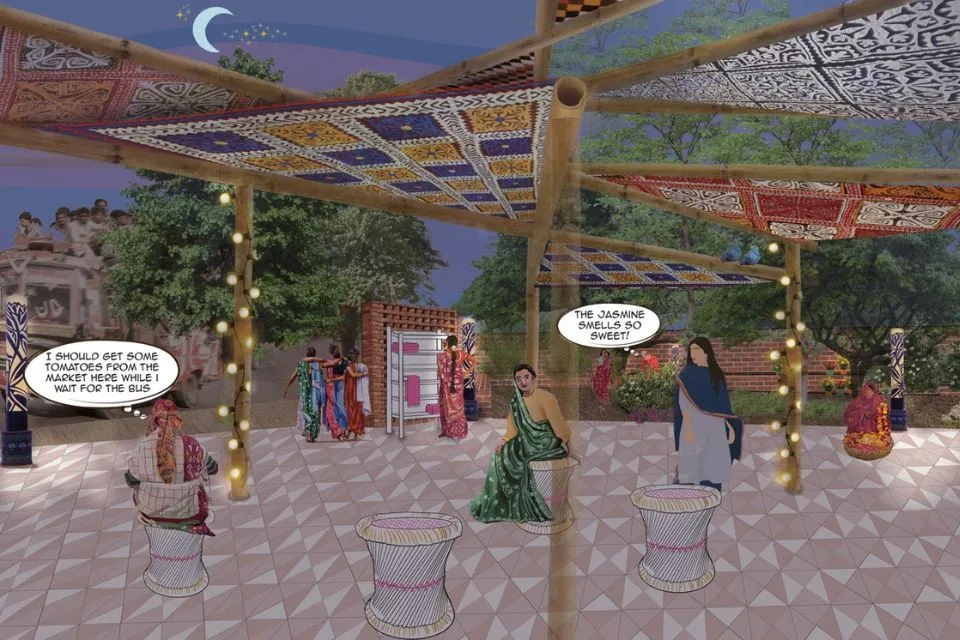"Celebrate your identity, your culture and your unique weirdness."

Zahra Hirji
- Degree:
- Master of Landscape Architecture
- Grad year: 2024
- Program:
- Campus: Vancouver
I grew up in the bustling city of Karachi, Pakistan. I finished my undergraduate from University of Toronto and returned to Karachi to work in the Design Office of the Aga Khan University Hospital. It was here that my love for well-designed public spaces began, where landscape and vernacular design was at the forefront of many of the design ideas. I met the renowned Landscape Architect Vladimir Djurovic at the Hospital and after talking to him briefly, I went on to do an internship with him for 3 months in Broummana, Lebanon. I learned a lot here but mostly the passion in which he spoke about landscape architecture inspired me to further pursue my masters in the field.
Why did you choose to study at UBC?
Vancouver and BC in particular has an immensely diverse range of landscapes. When choosing where to go in Canada, I knew that UBC was situated along the stunning coast of BC, and the program offers unparalleled opportunities to study coastal adaptation. The region’s diverse ecosystems and pressing challenges related to climate change and sea-level rise provide a rich, real-world context. Coming from Karachi, a coastal city also vulnerable to climate change, I knew that my education at UBC would have global relevance.
Additionally, UBC's diverse curriculum, which balances technical and conceptual coursework, addresses gaps I felt in my previous degree. Studio choices were incredibly extensive and provided opportunities for one to explore their own passions, whether it was cemeteries, remediation or rewilding children’s play. The university celebrates uniqueness and made it an ideal choice for my advanced studies.
What has made your time at UBC memorable?
All three years have been incredibly memorable for me. The first year was the toughest, with challenges like making friends online and learning the names of plant species that were unfamiliar to me. However, it was the supportive cohort that made this year manageable, as we shared our struggles and consistently offered help to one another. In the second year, students began to explore different avenues within the field. My first studio choice was with Mithun, a firm in Seattle. Learning from professionals in a different country, school and neighbourhood broadened my perspective on the endless opportunities in landscape architecture. This was also the year I became more involved with the school, frequently checking the employment page of SALA for opportunities. Finally, in the third year, during my graduate project, I continued to rely on my peers during difficult times. We supported each other immensely, for which I am truly appreciative.
How are you applying the skills you learned through your studies at UBC?
Each class I have taken at UBC has prepared me for various real-world scenarios. In my studio with Mithun in Seattle, assignments encouraged introspection and allowed us to be as creative as we wanted with open-ended deliverables. Collaborating with peers taught me patience, good listening skills and helped us bring our best designs forward.
Susan Harrington's class, "Rewilding Play," introduced innovative methods for educating children through landscape design, emphasizing that play elements from nature should be integrated throughout the design rather than confined to one space. Lastly, working with the Margolese team reinforced how different tools in landscape architecture can raise awareness, foster agency and educate the public.
What advice would you give a student entering SALA?
The Landscape Architecture program is a tight-knit community within the School of Architecture and Landscape Architecture (SALA). The more you engage with this community, the more opportunities will arise for you to participate in. While these opportunities may seem small at first, trust the process and recognize the valuable lessons they offer.
Another piece of advice is to celebrate your individuality, your cultural background and your identity. Reach out to other individuals or faculty members that inspire you, even if they have not taught you. Engaging with various faculty members is a great way to integrate yourself within the SALA community and expand your network.
What are your future plans to make a difference in our world?
My graduate project seeked to improve the physical environment of under-utilized spaces within Karachi that would in turn change the behavioural patterns of how women are addressed and represented in city planning. Women are resilient, strong and if given the opportunity, only help the city grow to be more inclusive and safe. The project aimed to revitalize under-utilized parks in Karachi and give women agency in the landscape. With a toolkit to create flexible spaces that facilitate gathering, the project ensured women and girls can work, play, learn and feel joy without being scared for their safety. Using my graduate project as a catalyst, I aim to present this project to NGO’s in the country to see if it can be implemented in urban parks in Karachi.
Do you believe your education or accomplishments at UBC will have an impact on the future of work?
I am confident that my accomplishments at UBC will significantly impact the future of landscape architecture. As a female person of colour who has had the privilege of studying at such a prestigious institution, I am empowered to advocate for minorities and incorporate diverse ideologies into my designs.
UBC has given me a platform to refine my skills, broaden my understanding of the environment, connect with industry professionals and celebrate my individuality. Now, it is up to me to leverage these skills to create spaces that enhance both our ecology and society.




